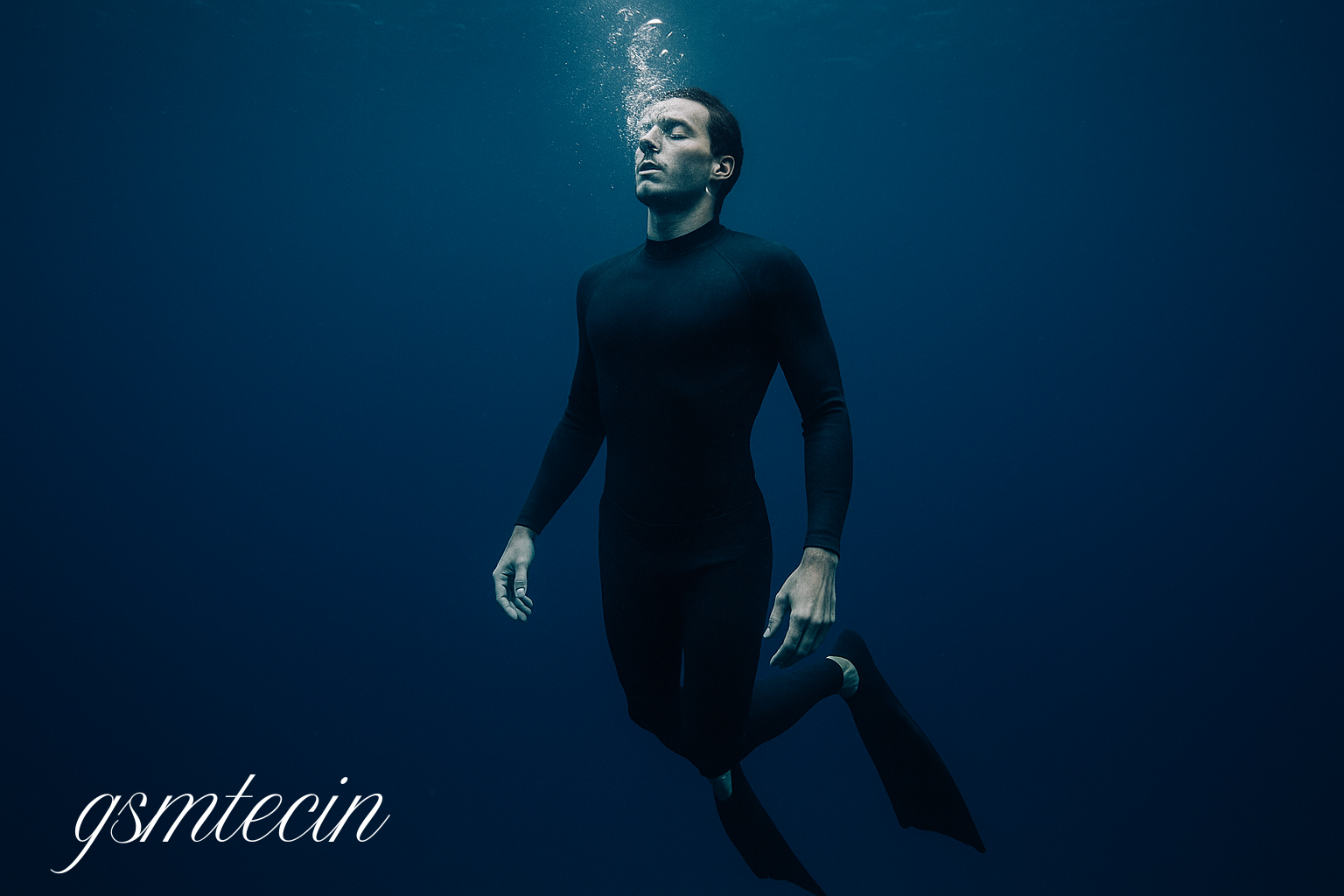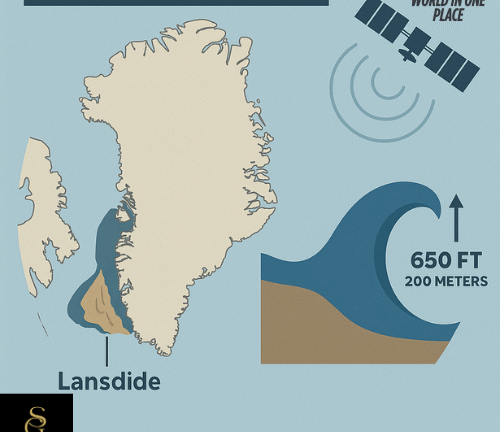Overview
Freediving, an ancient human activity, is subtly changing our perceptions of what the human body is capable of in a time when technological wonders make the news. Elite divers are using a single breath to descend hundreds of feet into the ocean and remain there for minutes at a time, challenging long-held scientific beliefs and stretching the imagination. In addition to their remarkable athletic accomplishments, they are assisting scientists in redefining our knowledge of human biology, adaptation, and even evolution.
The Development of Freediving
The practice of freediving is hardly new. Breath-hold diving was used by sponge divers in ancient Greece and pearl fishermen in Japan and the Middle East for both trade and subsistence, according to historical records. But what started out as a survival skill has evolved into a field of competition and science.
Athletes like Herbert Nitsch, Alessia Zecchini, and Alexey Molchanov have elevated the sport to unprecedented heights in recent decades. For example, Molchanov swam 133 meters (436 feet) in the constant weight discipline, which was thought to be unachievable for humans without assistance. These contemporary freedivers are pushing the limits of human endurance rather than merely testing the waters.
How Far Can a Human Go?
In the past, the response to that query was conservative. It was once thought by physiologists that water pressures higher than 30 meters could cause the brain to black out from oxygen deprivation or the lungs to collapse. However, today’s top freedivers frequently go deeper than 100 meters, and some, like Nitsch, have sunk as far as 214 meters (702 feet) in the “No Limits” category, which permits the use of weighted sleds.
What makes this possible? Unexpectedly, a large portion of it is due to natural human adaptations that are similar to those of marine mammals.
Nature’s Hidden Instrument: The Mammalian Dive Reflex
The mammalian dive reflex is a secret superpower shared by all people. When the face is immersed in cold water, this evolutionary adaptation takes effect. It causes a number of physiological alterations:
Bradycardia: The heart slows down in order to preserve oxygen.
Redirecting blood flow from the limbs to essential organs is known as peripheral vasoconstriction.
Blood shift: To shield the lungs from compression at depth, blood plasma fills them.
Humans can now go deeper and stay underwater for longer than previously thought thanks to these changes. Although everyone has the reflex, elite divers intensify its effects over years of training, turning a common characteristic into a remarkable one.
Mental and Physical Training
Discipline and mental control, in addition to their physiology, are what distinguish record-breaking freedivers. In order to overcome their body’s innate panic reaction to increasing carbon dioxide levels, many elite divers train for years. Just as important as physical prowess is the capacity to maintain composure in the face of adversity.
Typical training consists of:
Tables of CO₂ and O₂ tolerance: Activities that progressively increase breath-hold duration.
Stretching the lungs: To improve flexibility and capacity.
Meditation and mental imagery: To maintain concentration and preserve oxygen.
In controlled settings, some athletes, such as Stig Severinsen, have held their breath for more than 20 minutes—an accomplishment that challenges the notion of what is physiologically “normal.”
The Science of Oxygen Storage and Spleens
Studying the Southeast Asian nomadic sea tribe known as the Bajau led to one of the most intriguing scientific discoveries. By releasing oxygen-rich red blood cells during dives, Bajau divers’ enlarged spleens serve as natural oxygen tanks, according to research findings.
A rare window into recent human evolution was provided by genetic analysis, which showed that the Bajau carry a gene variant associated with spleen size. Their example challenges preconceived notions about our species’ capacity for adaptation to aquatic environments by indicating that natural selection can improve diving skills in a matter of generations.
The Ultimate X-Factor: Mental Resilience
Freediving is profoundly psychological, even though physiology plays a significant part. Divers frequently refer to their activity as a kind of meditation. Freediving necessitates surrender, or total peace and faith in one’s body, in contrast to other extreme sports.
In actuality, even a hint of panic can impair performance. Because of this close connection between the body and the mind, freedivers frequently practise mindfulness, yoga, and breathwork techniques, which have uses in corporate stress management, mental health, and even medicine.
Science and Medical Consequences
Freediving has uncovered human adaptations that are transforming industries outside of sports. Scientists are investigating how these skills might influence the management of oxygen-deprivation disorders like:
Traumatic brain injuries and strokes
Arrest of the heart
Apnoea during sleep
Elevated altitude sickness
Furthermore, knowing how freedivers withstand the need to breathe could enhance training methods for pilots, astronauts, and military divers who work in hypoxic conditions.
Hazards and Ethical Boundaries
Freediving is risky even though it’s beautiful. Blackouts in shallow water, or losing consciousness while ascending, are frequent and can be lethal if rescue is delayed. Lung barotrauma, nitrogen narcosis, and hypoxia can kill even seasoned divers.
Discussions concerning the morality of extreme self-experimentation have been sparked by these dangers. Are these boundaries appropriate for humans to push? Or are we advancing our understanding of human biology in a responsible manner? Risk must be balanced with strict training, safety procedures, and scientific supervision, according to the majority of freedivers and scientists.
Reevaluating the Hypothesis of Aquatic Apes
Some scientists have re-examined the Aquatic Ape Hypothesis in light of the remarkable adaptations of elite divers and seafaring communities. According to this contentious theory, certain features of human evolution, like hairlessness, bipedalism, and breath control, might have originated in a semi-aquatic environment.
Even though the theory is still up for debate, it becomes more plausible when one takes into account contemporary diving cultures and our natural mammalian dive reflex. It is evident that humans still possess strong aquatic abilities, which are frequently disregarded in conventional evolutionary theory, regardless of whether we are descended from aquatic apes.
The Future: What Comes Next?
Both as a sport and as a scientific pursuit, freediving is developing quickly. The limits of performance continue to be pushed by technological advancements such as real-time dive monitoring, hyperbaric training, and underwater biometric sensors.
Future studies could look into:
Using genetic engineering to improve oxygen utilisation
Training with therapeutic breath-hold
Enhanced lungs via medical procedures
Understanding these extreme human adaptations will become more and more important as we continue to explore the deep sea and even space—environments that resemble the high-pressure, oxygen-poor conditions that freedivers endure.
In conclusion
Reaching new depths is only one aspect of freediving; another is discovering new facets of human potential. The human body and mind have far more limits than we previously thought, as demonstrated by these record-breaking divers’ walking (or swimming) experiments.
Scientists are rewriting the history of physiology, adaptation, and evolution by investigating how and why they behave in certain ways. They have found a profound truth in the quiet of the deep: we are far more powerful than has ever been acknowledged.


